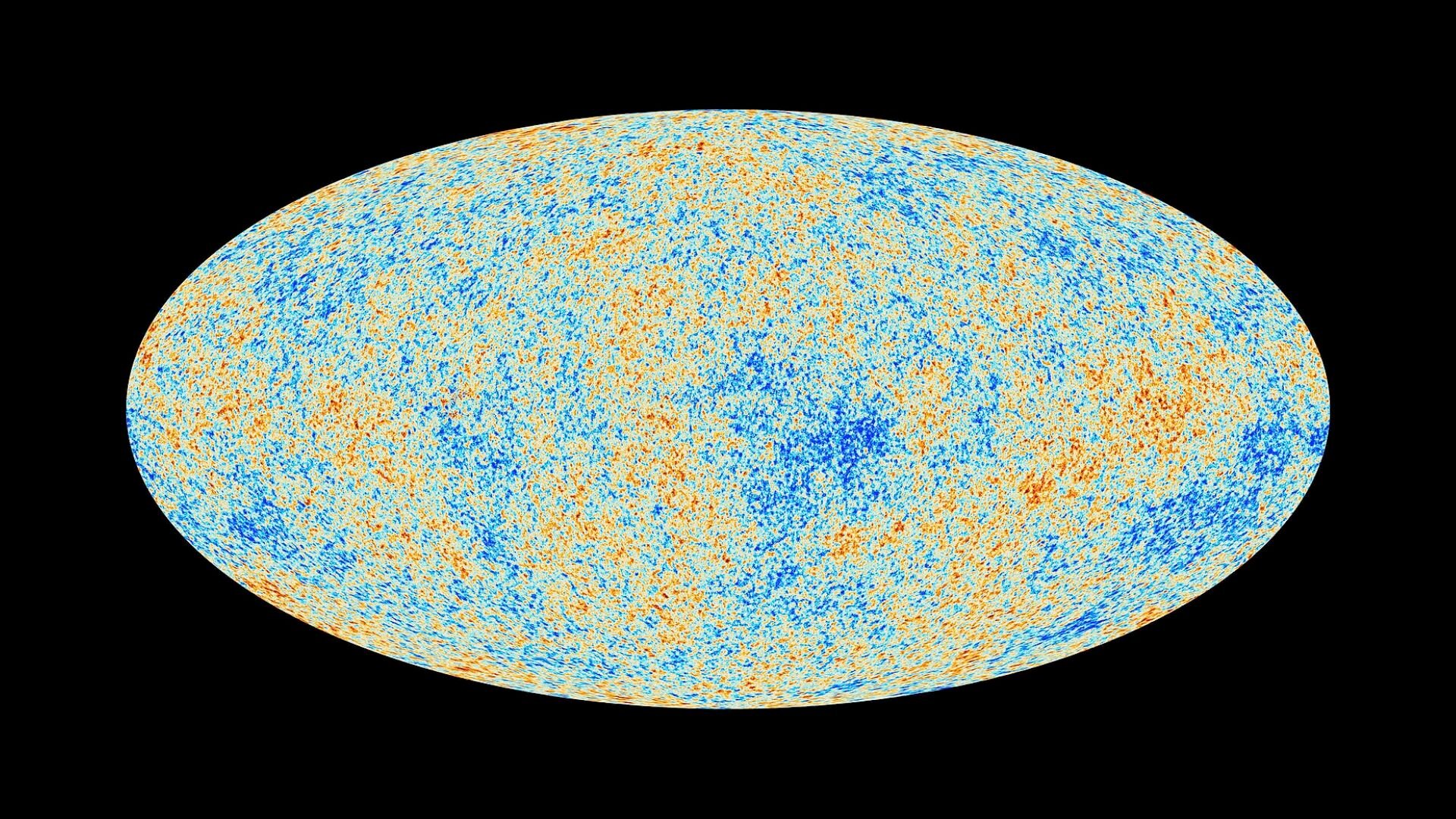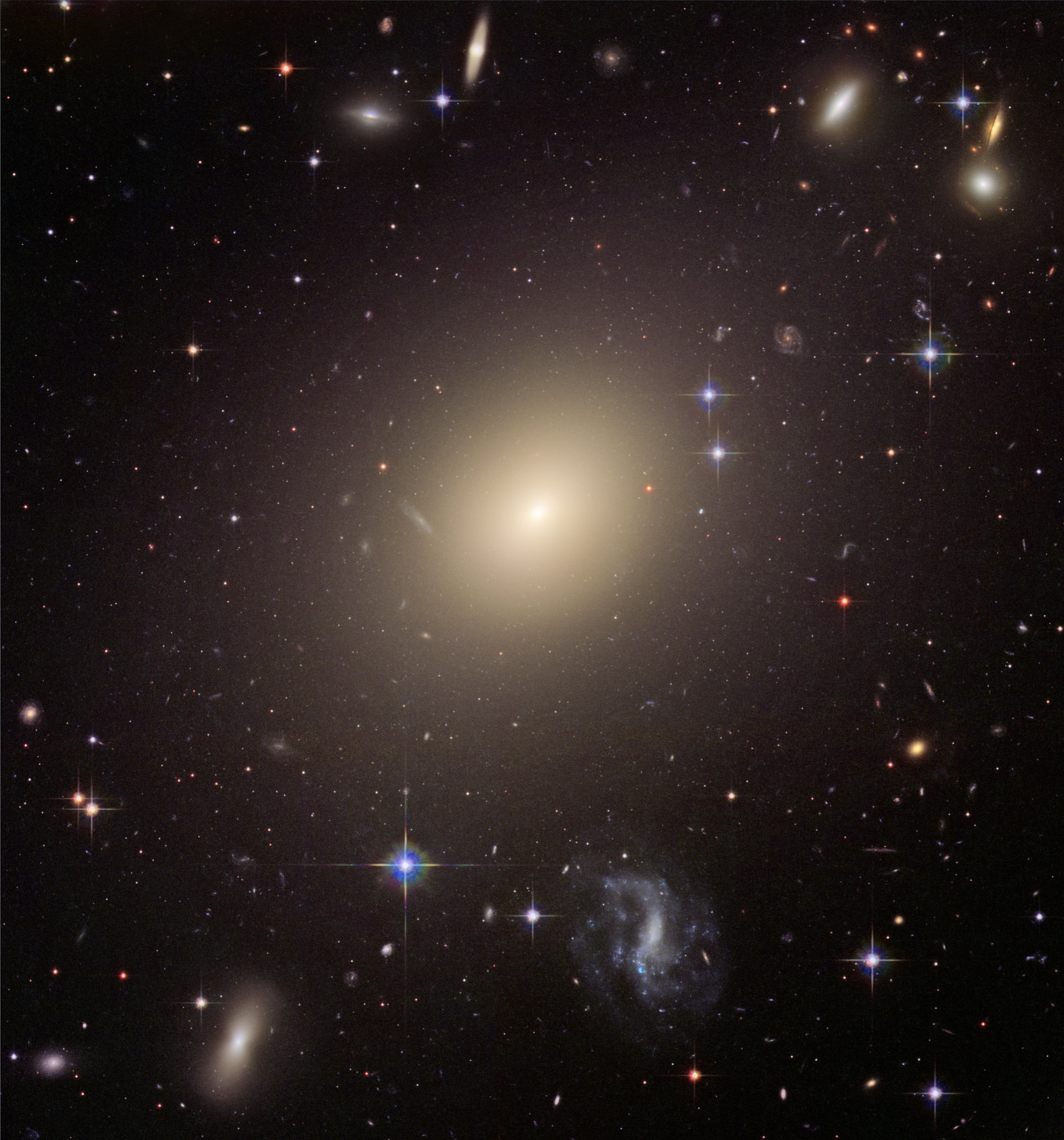The cosmic microwave background, this fossil from the Big Bang, called into question 💡
Follow us on Google News (click on ☆)
Researchers from the universities of Bonn, Prague, and Nanjing propose a different view of the formation of elliptical galaxies. Their study, published in Nuclear Physics B, suggests that the intensity of the cosmic microwave background may have been overestimated. These galaxies, among the first to form, would have emitted light so intense that it overlaps with the primordial signal.

A map of the cosmic microwave background.
Credit: ESA and the Planck Collaboration. noirlab.edu/public/images/CMB.
The standard model of cosmology relies on an accurate reading of the cosmic microwave background. This radiation, emitted 380,000 years after the Big Bang, is considered proof of the theory's validity. The tiny variations in its intensity have helped us understand how matter clumped together to form the first structures.
Pavel Kroupa and Eda Gjergo calculated the impact of elliptical galaxies on this signal. Their rapid formation and extreme luminosity could explain part, if not all, of the cosmic microwave background. This discovery poses a serious challenge to the standard model, which may require major revisions.
Elliptical galaxies formed in just a few hundred million years. Their light, traveling for nearly 13.8 billion years, would still be detectable today. Researchers estimate it contributes at least 1.4% to the cosmic microwave background, thereby distorting the original measurements.
This overlapping of signals calls into question the interpretation of variations in the cosmic background. These variations, crucial for explaining galaxy formation, might actually be influenced by the light from elliptical galaxies. Such a discovery would require a complete rethink of the Universe's earliest stages.

The giant elliptical galaxy ESO 325-G004 shone 10,000 times brighter during its formation than it does today. These galaxies briefly illuminated the entire Universe.
Credit: NASA, ESA, and The Hubble Heritage Team (STScI/AURA); J. Blakeslee (Washington State University)
The study thus opens new perspectives on galaxy formation and the history of the Universe. If these findings are confirmed, they could lead to a major revision of current cosmological theories. Future observations will have to decide between these different interpretations.
What is the cosmic microwave background?
The cosmic microwave background is the oldest light in the Universe, emitted about 380,000 years after the Big Bang. It corresponds to the moment when the Universe became cool enough for electrons and protons to combine into hydrogen atoms, making the Universe transparent to light.
This fossil light reaches us today in the form of microwaves, due to the expansion of the Universe stretching its wavelength. It is considered major evidence for the Big Bang theory, offering a snapshot of the early Universe.
The tiny temperature variations in this cosmic microwave background are crucial. They reflect density fluctuations in the primordial matter, which later gave rise to galaxies and galaxy clusters. These variations are therefore essential for understanding the current structure of the Universe.
However, the new study suggests these variations might be partly due to light from the earliest elliptical galaxies. This would challenge our understanding of cosmic structure formation and require revising existing models.
How do elliptical galaxies form?
Elliptical galaxies are among the oldest and most massive in the Universe. They are characterized by their spherical or ellipsoidal shape and lack of spiral arms. Unlike spiral galaxies, they contain little gas and dust, and their star formation is generally very low.
These galaxies likely formed through collisions and mergers of smaller galaxies in a still-young Universe. These violent processes compressed gas, triggering intense star formation in a relatively short time. This explains their extreme brightness during formation, as the study suggests.
The rapid formation of elliptical galaxies had a significant impact on their surroundings. Their intense light may have ionized nearby gas, influencing the formation of later generations of galaxies. This interaction between galaxies and their environment is an active area of research in astrophysics.
If elliptical galaxies did contribute to the cosmic microwave background, it also implies their formation left a lasting imprint on the Universe. This discovery could help better understand the physical processes at work in the Universe's earliest stages.